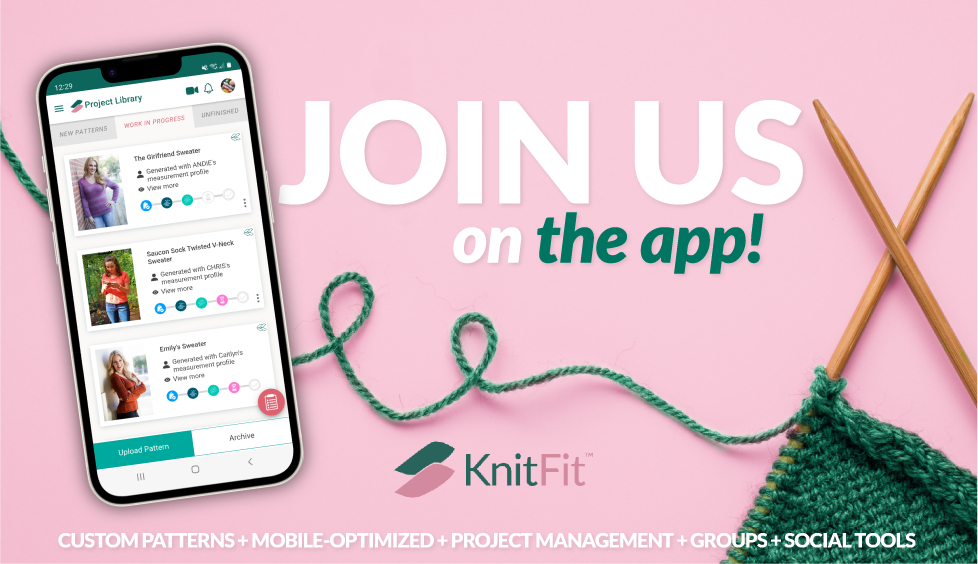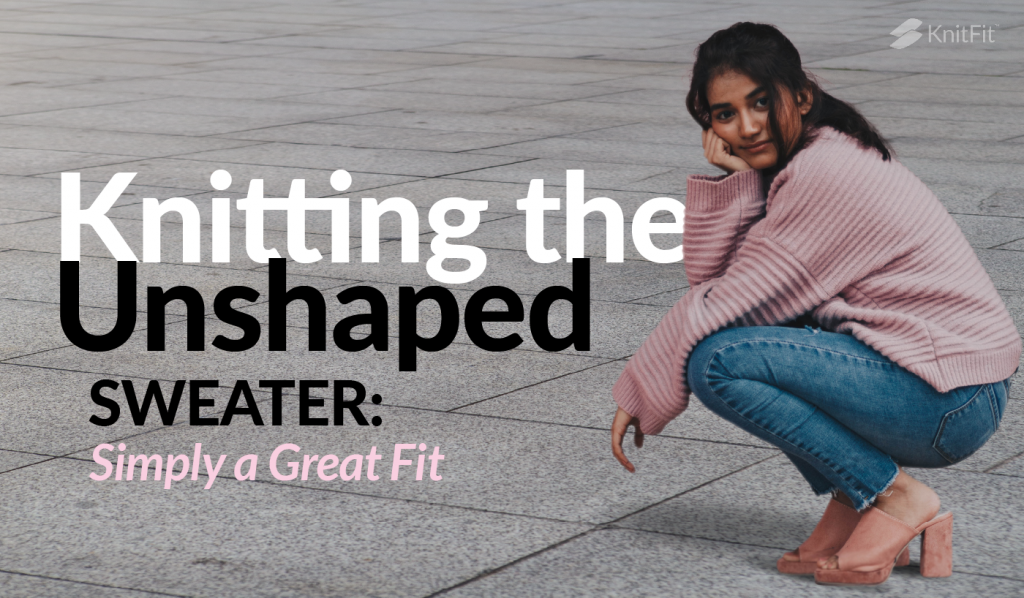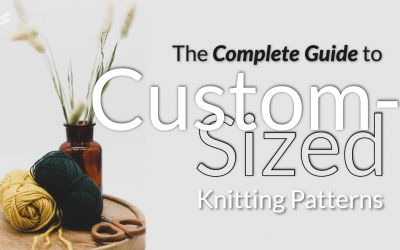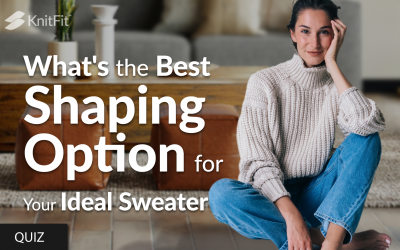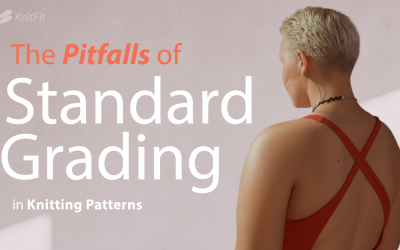Knitting the Unshaped Sweater: Simply a Great Fit
The key to knitting the unshaped sweater is finding a pattern that offers your size AND your proportions.
Imagine you’re looking for a relaxed top, for any reason—maybe your style preferences veer towards looser fits and boxy silhouettes, or you’re going for comfort above all else. The common solution is to pick the most basic, boxy design you can. Later, you’ve finished a quick swatch, you’re flying through stockinette. Then a few rows in, it hits you. A successful swatch means the FO will fit your bust. What about other body widths and lengths?
Or worse, maybe your pattern doesn’t even offer your bust size. Now let’s talk about getting that cozy, unshaped fit, and having it actually fit–without any modifications or math!
To complement the skills we’re building in this post, also read The Ultimate Guide to Personalized Shaping for Your Knitting Patterns; a key skill-building article for improving accuracy of fit through shaping options.
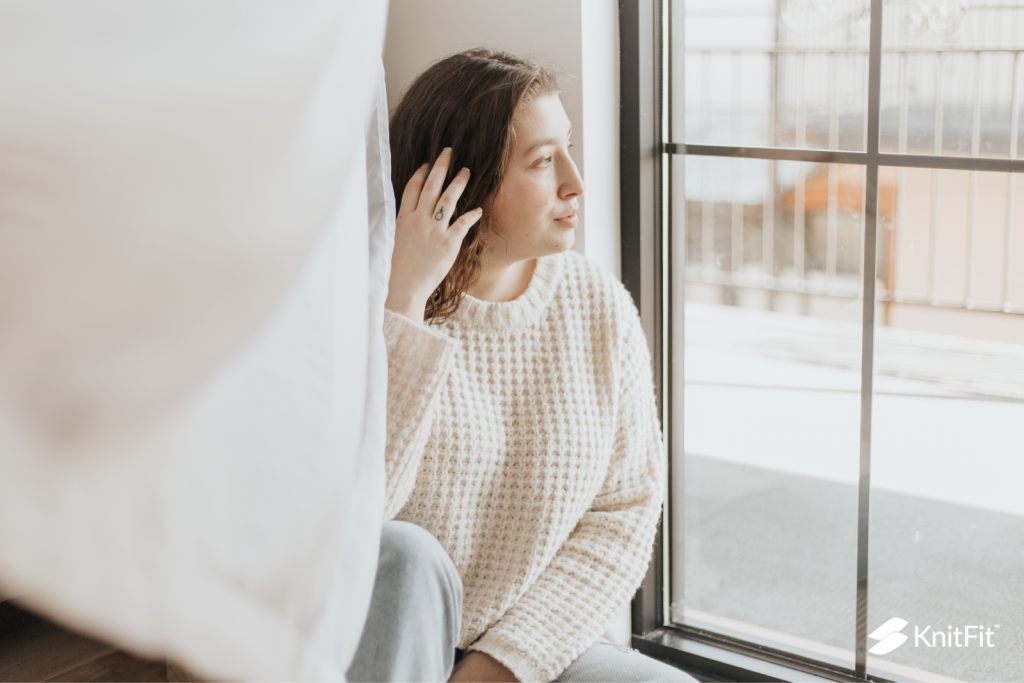
Before we jump into sharing skills and strategies for knitting the unshaped sweater, let’s build a solid foundation by looking at the surprising reasons why these issues of fit occur.
How Simplifying Knitting Has Led to Unrealistic Size Ranges
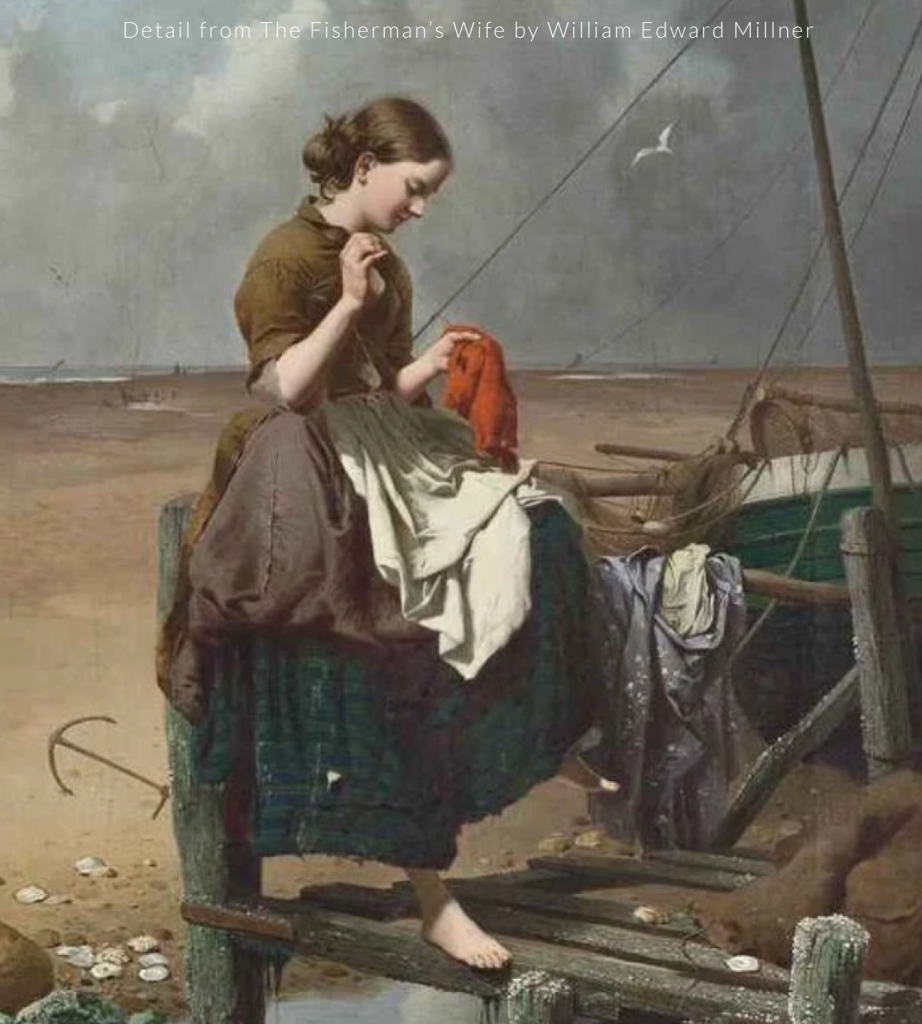
Knitters didn’t always use patterns. Not even as recently as the 1890s and early 1900s, when Ireland welcomed the birth of the legendary Aran fisherman sweater. Instead, those Irish fisherman’s wives determined the sizing for their project based on the wearer’s body. While laborious to be sure, this could only have improved accuracy. It’s also an example of custom sizing.
As hand-knitting patterns have became a commodity, a table of average body sizes has been the basis for developing sizes. These tables of body sizes are not accurate averages for our current population, and debate surrounds the reasons for this. The reasons are important to explore. But even if these sizes did reflect accurate averages, that wouldn’t mean your sweater would fit. The fact is that our proportions are unique.
Choosing a size based on bust size relies on faith that all of your other body measurements relate numerically to your bust size with the same exact proportions as the “average person.” Meanwhile this “average person” represents a composite of body measurements. You may have the same bust size as this average but a different shoulder width, torso length, or waist circumference.
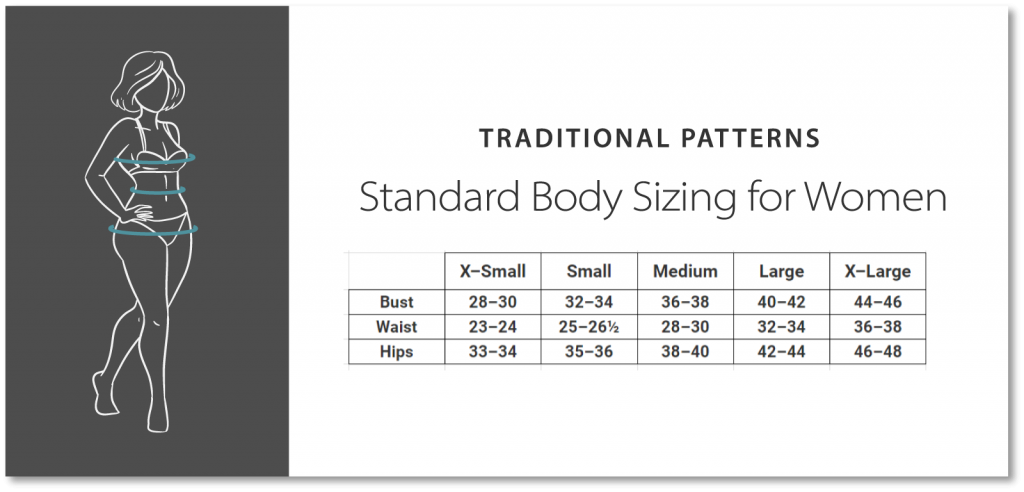
Perhaps the old way resulted in more accurate sizing–but wow does it sounds like a lot of work! Fortunately, we now have unshaped custom-sized patterns we can generate for our unique sizes, proportions, and lengths, and it requires no math.
The development of custom-sized, unshaped patterns
Across many years as a local yarn shop owner, KnitFit™ App founder Jane Nickerson saw customers daily who wanted custom-sized patterns. However, while they wanted a good fit, they didn’t always want custom shaping. Sometimes they wanted a relaxed, boxy look. Jane realized they wanted a pattern based on their real body measurements without following curves. As a result, Jane helped them generate unshaped, custom-sized patterns, and the result was well-fitting sweaters with straight vertical side seams. The circumference fits the widest part of the torso and remains constant circumference from top to bottom.
Each of Jane’s customers had specific goals with regards to custom-sized patterns. This desire to mix and match shaping and fit features stuck as she went on to develop the KnitFit™ app. Multiple shaping options were developed, one being No Shaping, resulting in the classic unshaped sweater.
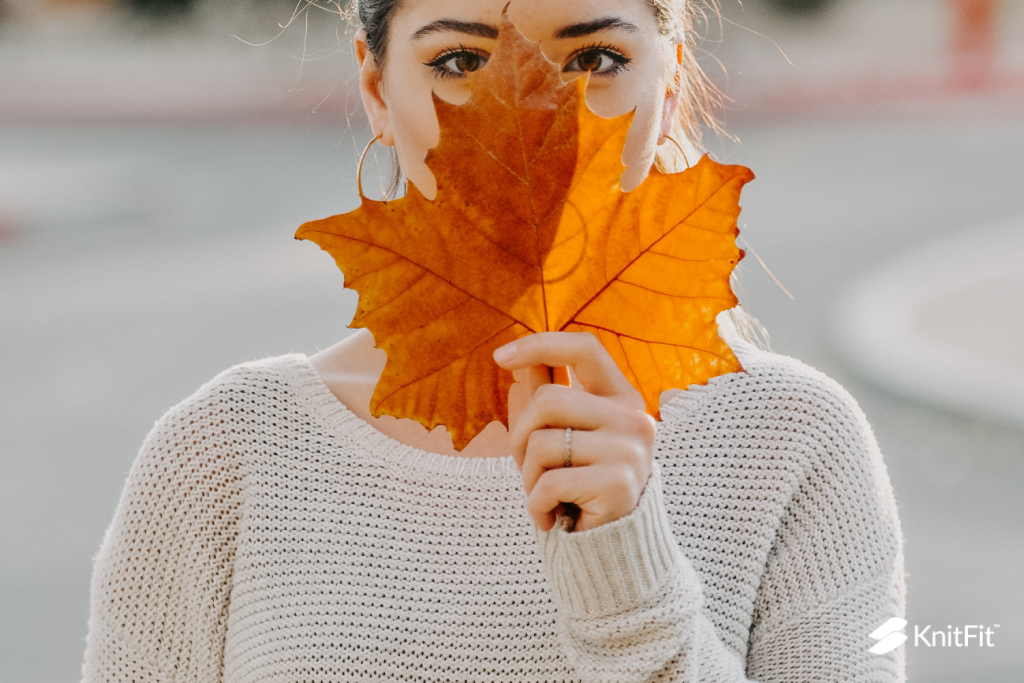
Understanding the Unshaped Custom-Sized Garment
A custom-sized garment with No Shaping will include the following features:
- The circumference of the garment remains constant from underarm to hem
- Width is based on the largest body circumference of the wearer (not just the bust)
- Body and arm length reflect the knitter’s selections during pattern generation
- Separate front and back measurements ensure accurate side seam placement and a more comfortable fit
- Ease reflects the knitter’s selections during pattern generation, and note that sleeve ease may be unique from body ease if desired
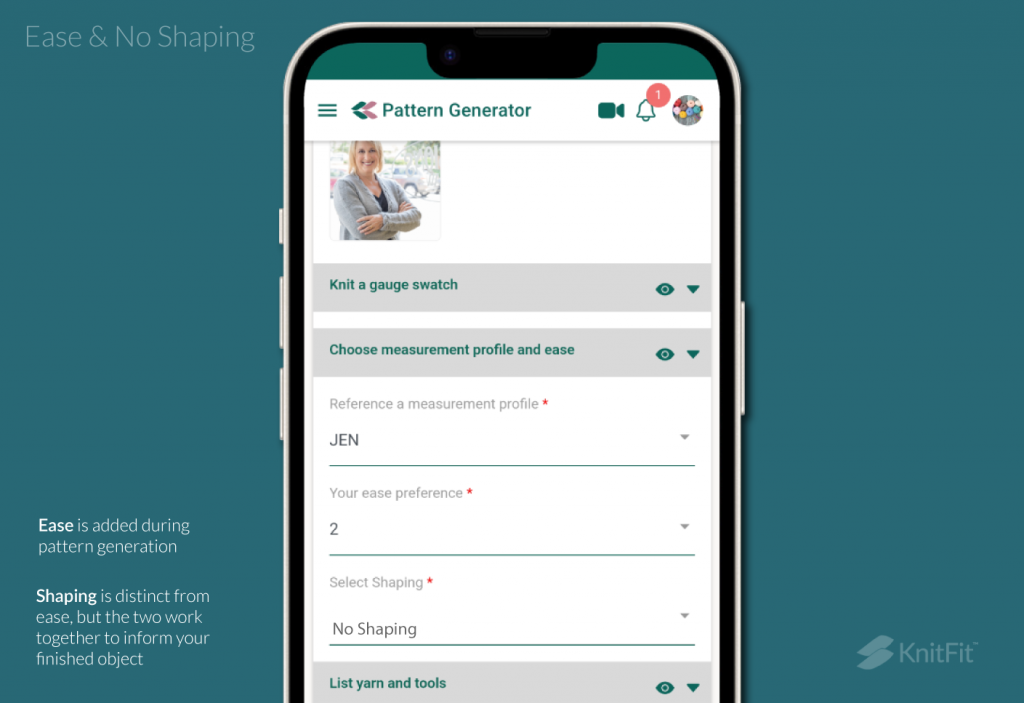
Understanding ease in unshaped patterns
The knitter can choose the amount of ease they wish to be included in their custom-sized sweater. Ease selection occurs during pattern generation. The knitter can add any amount of negative or positive ease in the Ease field in the Pattern Generation form.
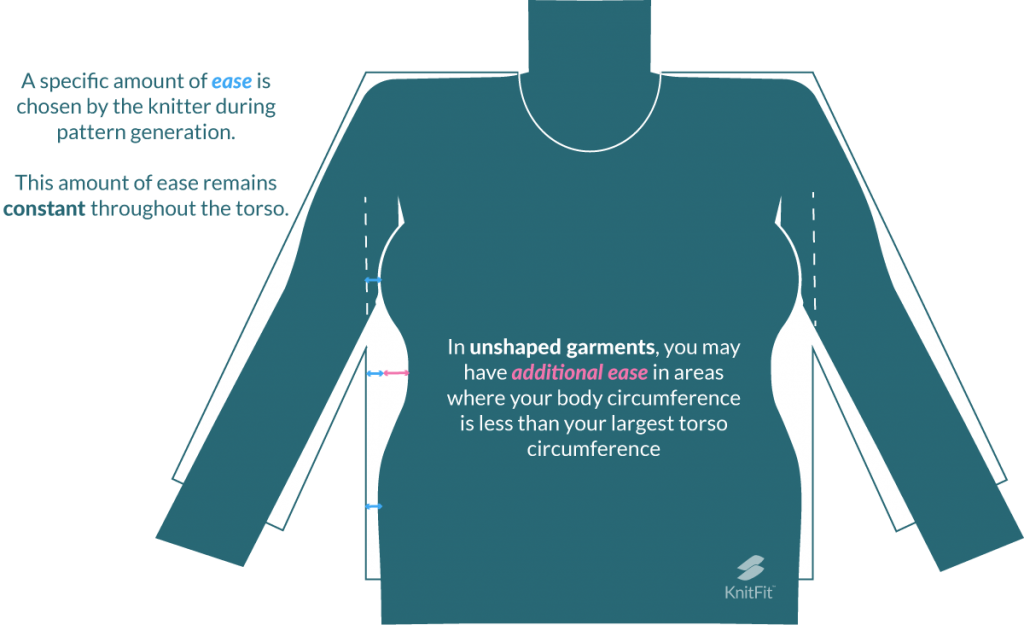
When we think about boxy sweaters, we often think about extra ease. But you may not automatically have a lot of ease in your custom-sized sweater unless you specifically select the amount you want during pattern generation. That’s because with an unshaped sweater, the circumference of the body remains constant from hem to shoulder. That circumference is based on the largest part of your torso–whichever that may be between hips, waist, or bust. So if you have a larger bust and smaller hips, with an unshaped sweater, you will necessarily encounter some amount of extra ease in the hips area, since the width will be based on your bust. If you want ease in the bust, you’ll need to add it during pattern generation. When you add ease, that ease is added to all areas of the torso.
When to Select ‘No Shaping’
There are many reasons a knitter might select No Shaping for their knitting project:
- The wearer wants a looser fit (can also be addressed with increased ease)
- The wearer prefers a boxy fit with straight side seams
- The knitter is new to patterns and wants to keep it simple, and avoid higher amounts of increases and decreases
- The wearer prefers to deemphasize curves
- The wearer wants a great fit but simply doesn’t want shaping
- The knitter wants the FO to fit the wearer as they grow and change

Knitting a Garment with ‘No Shaping’
Note: With an abundance of choices around fit, learn them all before generating your pattern. For a deeper understanding of the difference between the shaping options, read The Ultimate Guide to Personalized Shaping for Your Knitting Patterns.
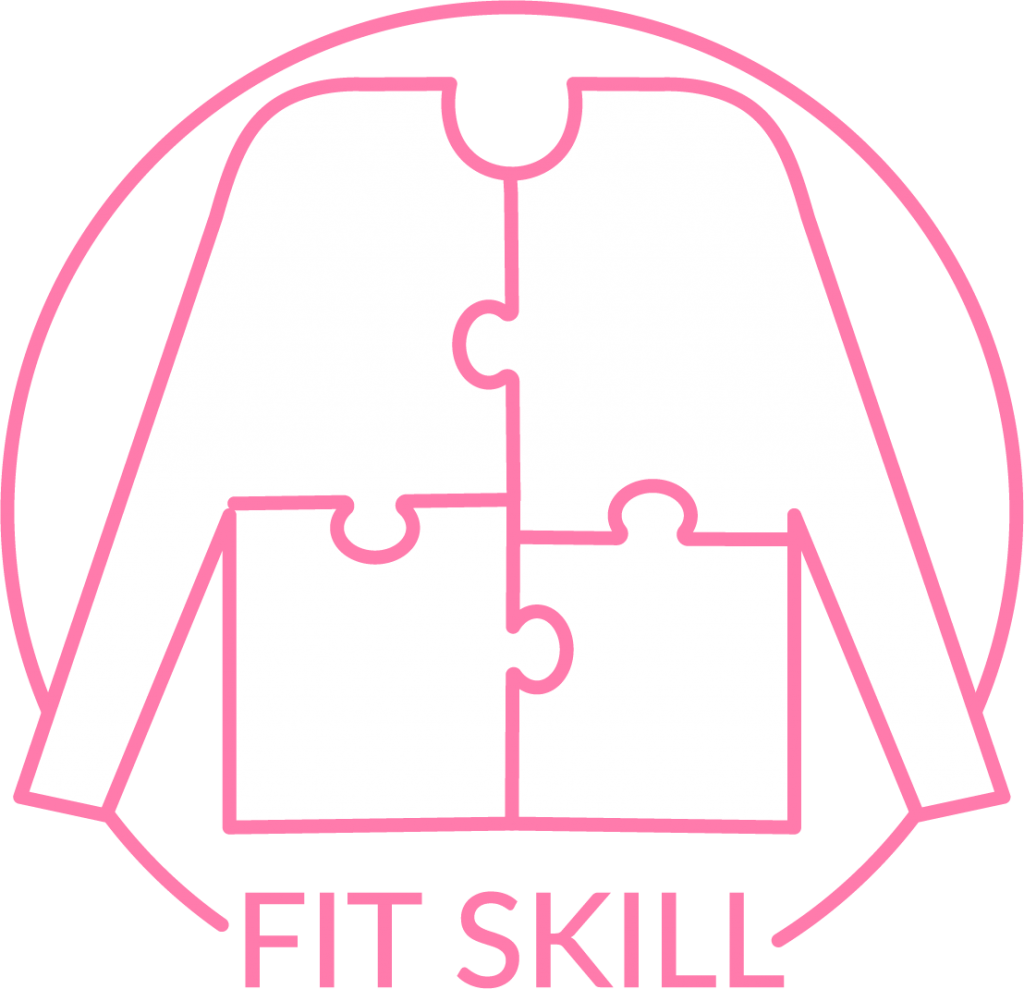
BASICS OF SHAPING
“Quote from the pillar page related to this blog post, it can be up to 3 lines only.”
Getting Started: Knitting the Unshaped Sweater
To knit a custom-sized garment without shaping, you’ll use the KnitFit™ app. This allows you to get pattern instructions for your body measurements, with any amount of ease you want.
To begin, download the app, (it’s FREE for one project!). Next, download a custom pattern (again, lots of great free ones to choose from). The Boyfriend Sweater is a fantastic basic if you are going for simplicity. Navigate to the Pattern Generator. Follow the pattern generation tutorial here if you have any trouble.
When generating your pattern, one of the selections you’ll be able to make is what type of shaping you want to include. Select ‘No Shaping’.
For additional tutorials on how to use the KnitFit™ app, take a look at the help articles. You can also watch KnitFit™ video tutorials both on the website, or in the app itself. In the app, click the video icon at the top right of the interface. This will open a window showing you videos pertaining to the module you are currently in. The app can be used on both mobile and on the website, and it syncs progress across all your devices.
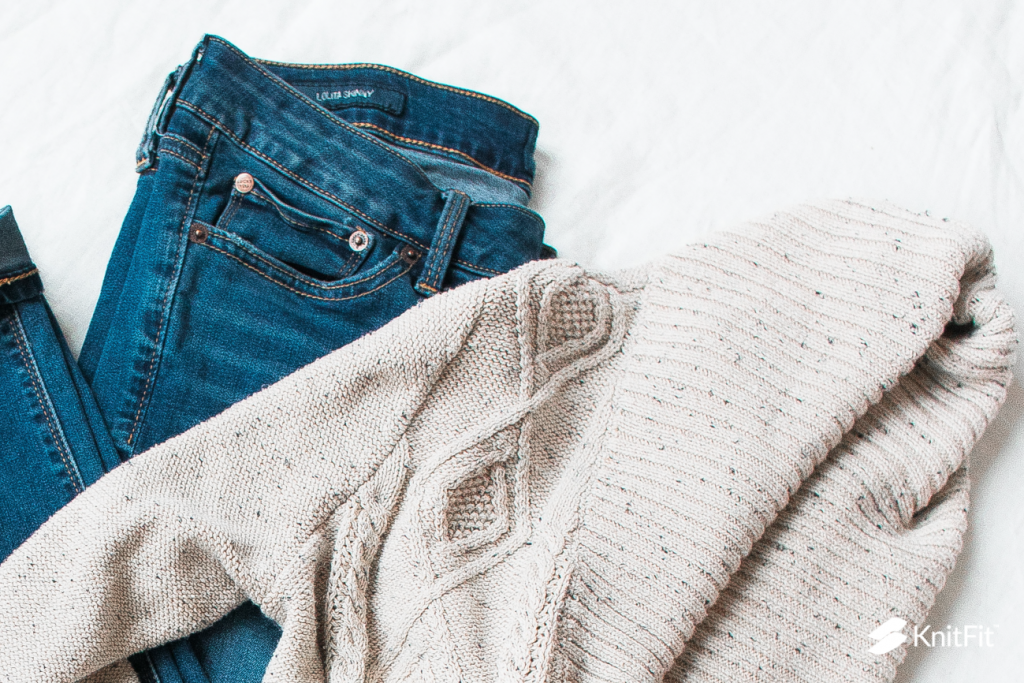
A New Choice for the Knitter’s Toolbox
Knitters want well-fitting garments so badly that some of us have resorted to laboriously modifying or resizing existing patterns. Other knitters, determined to keep the hobby simple, place faith in standard sizing and spend the process hoping. With challenges on either side, unshaped custom patterns are a welcome solution, as a choice that results in accurately sized garments WHILE keeping the hobby simple. With more innovative choices at hand, our community can focus on creativity, confident that our knits will pass the test of continued wear!
Ready for more skills around fit and shaping of your handknits?
Check out similar skill-centered articles to deepen your fit and shaping knowledge and knit more garments that fit!
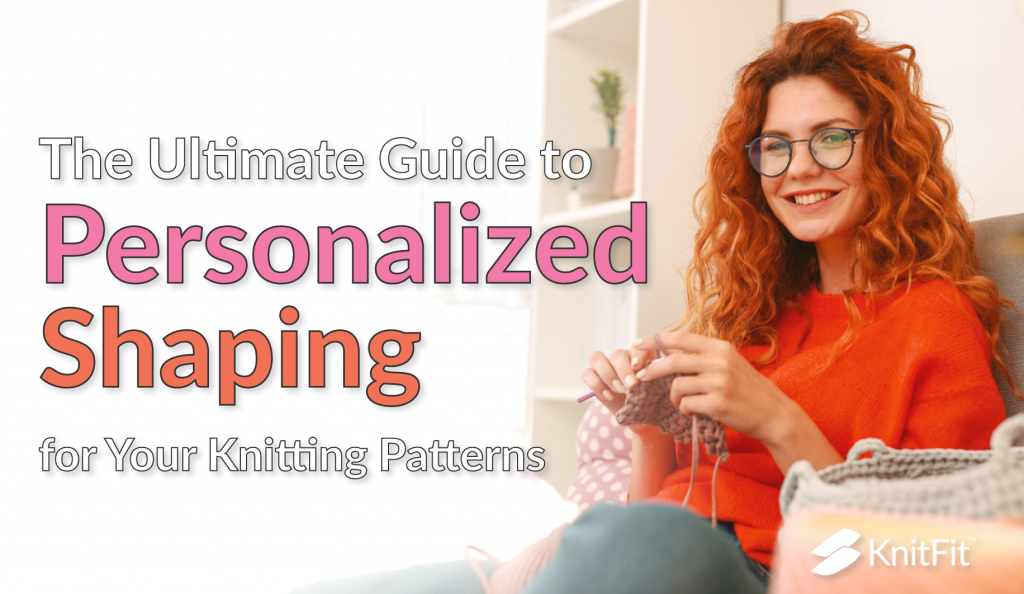
Improve accuracy of sizing in your project even further—learn to incorporate shaping into KnitFit™ custom pattern generation.
The Ultimate Guide to Personalized Shaping for Your Knitting Patterns
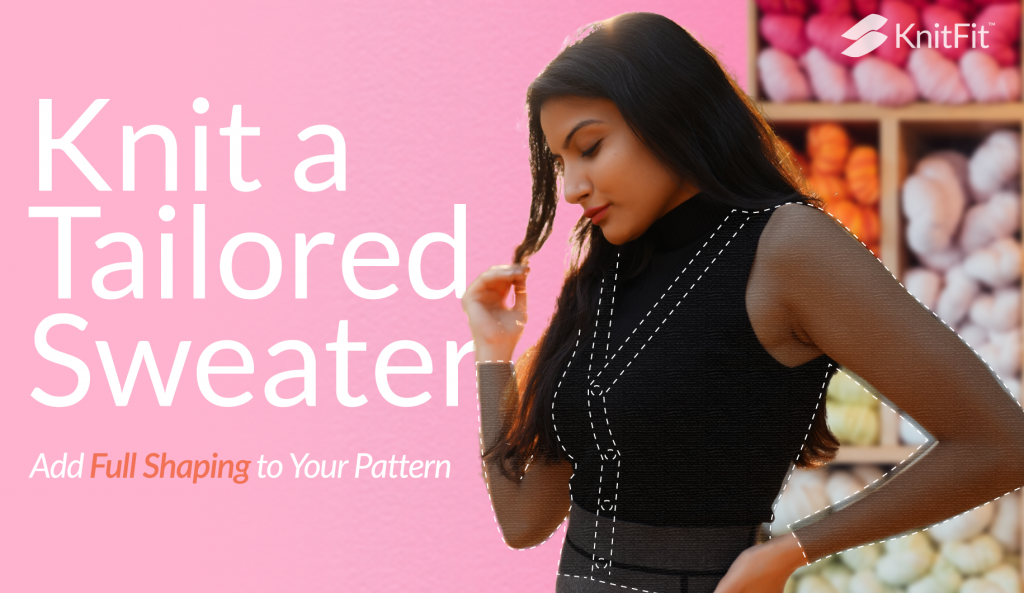
Harness the power of tailoring in your knitted garment using Full Shaping with KnitFit™ custom pattern generation.
Knit a Tailored Sweater: Add Full Shaping to Your Pattern
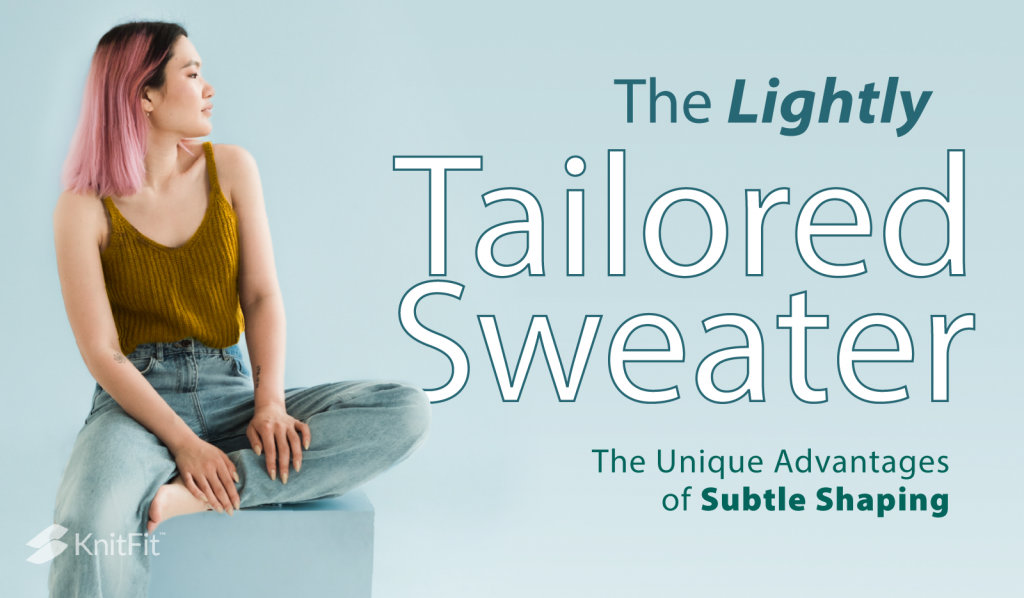
Subtle Shaping follows your curves, but without the fully tailored look. Learn to use shaping in small ways for big results!
The Lightly Tailored Sweater: the Unique Advantages of Subtle Shaping
